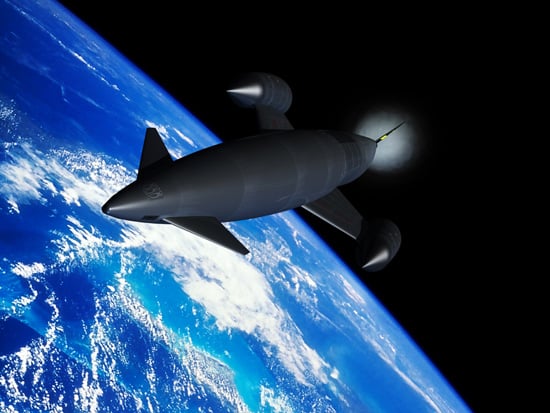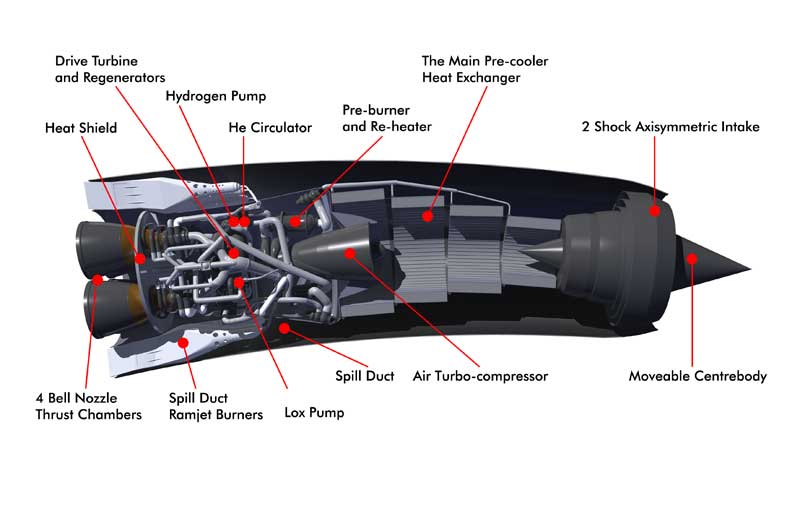You may not have heard much of the Skylon spaceplane project, but you soon will hear more, partly due to 3D printing technology.
Skylon is a project to build a working spaceplane by UK-based Reaction Engines Limited. The “single stage to orbit” craft will begin its journeys from a conventional airport runway, but then use its advanced engines to rapidly accelerate to mach 5.4 (over 6,000 kph) using oxygen from the atmosphere. Beyond that speed the engine switches to burning its hydrogen fuel using onboard liquid oxygen.
The most difficult part of this approach is to somehow cool the incoming air during the first phase for proper combustion. Evidently the engine must perform the incredible feat of cooling the +1,000C incoming air to -150C in less than 0.01 seconds. Talk about refrigeration technology!
How the company has been able to do this has been a mystery until recently, when they finally revealed their approach after patent application. Their approach involves squirting a precise mixture of methanol and water at key points in the air path. The water evaporates, cooling the air. This introduction of the methanol/oxygen mix is done by a very special injector mechanism.
It turns out this injector (shown above) is 3D printed in metal due to its complex geometry.
Here we have a case where a company has leveraged 3D printing technology to develop a part that could not have been practically made with conventional approaches. In other words, this spaceplane has been enabled by 3D printing, among other technology developments.
It’s also interesting to note that one of Skylon’s competitors, SpaceX, also makes good use of 3D metal printing to develop efficient parts for their rocket engines.
Is it possible the new wave of space exploration has been (partly) made possible by 3D printing? We think so.
Via Next Big Future
Image Credit: Wikipedia




